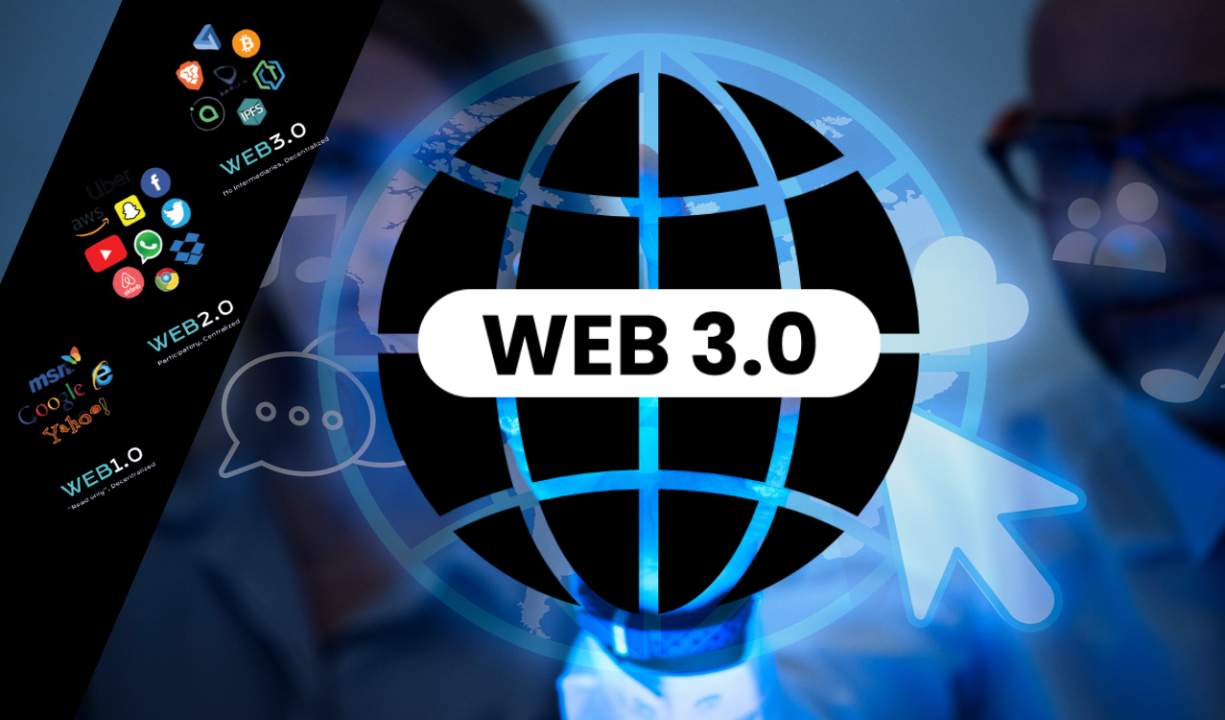Web 3.0: Decentralized, Open, and Intelligent – Shaping the Future of the Internet
The internet, an ever-evolving entity, has undergone significant transformations throughout its existence. From its static beginnings to the dynamic and interactive Web 2.0, the digital landscape has continually evolved. Now, on the horizon, we find Web 3.0, a new generation of the internet, poised to revolutionize our online experience. Web 3.0 promises decentralization, openness, and intelligence, thanks to groundbreaking technologies like blockchain, artificial intelligence (AI), and the semantic web. In this article, we’ll dive into the essence of Web 3.0, its underlying technologies, and its potential implications for the digital world.
Unveiling Web 3.0
Web 3.0 is not merely a buzzword but a visionary concept rooted in three fundamental principles:
- Decentralization: Unlike its predecessors, Web 3.0 doesn’t rely on centralized servers or intermediaries. Instead, it operates on distributed networks of nodes, ensuring security, privacy, and user sovereignty.
- Openness: Web 3.0 thrives on open standards and protocols, inviting anyone to access and contribute. It emphasizes transparency and verifiability, enabling users to scrutinize and validate network data and transactions.
- Intelligence: Web 3.0 harnesses AI and semantic web technologies to create a more intelligent web. It can learn from user data and interactions, offering personalized and optimized services and experiences.
The Inner Workings of Web 3.0
Web 3.0 blends various technologies and protocols to achieve its goals. Here’s a glimpse into the key components:
- Blockchain: Blockchain technology is the cornerstone of Web 3.0, enabling distributed ledger systems that store and verify transactions without intermediaries. It ensures security, transparency, and trust, while also introducing novel forms of digital ownership and identity.
- Cryptocurrency: Cryptocurrency, fueled by blockchain, provides a means of exchange within Web 3.0. It facilitates new avenues for value creation and transfer in the decentralized digital economy.
- Smart Contracts: Smart contracts are self-executing agreements that enforce transaction rules and logic on the blockchain. They automate processes, enhance efficiency, and enable novel forms of governance and collaboration.
- Decentralized Applications (DApps): DApps run on blockchain networks, offering a wide range of services and functions, from social media and gaming to finance and more. They exemplify the decentralized nature of Web 3.0.
- Artificial Intelligence (AI): AI empowers Web 3.0 with smart agents, content generation, personalization, and optimization. It contributes to the web’s intelligence and adaptability.
- Semantic Web: Semantic web technologies enable machines to understand the meaning and context of web data. They introduce structured data, linked data, ontologies, and reasoning, enriching the web’s content and utility.
Microsoft’s Bing Chat AI: Bridging the Gap Between Desktop and Mobile
Exploring Web 3.0 in Action
Web 3.0 is not a distant dream but a concept already manifesting in the digital landscape. Here are some compelling examples:
- Ethereum: Ethereum, a prominent Web 3.0 platform, supports the creation of decentralized applications (DApps) and the management of non-fungible tokens (NFTs) that represent unique digital assets.
- IPFS (InterPlanetary File System): IPFS is a protocol for distributed file storage and sharing on the internet. It aims to replace traditional HTTP with a more peer-to-peer and content-addressable system.
- Brave Browser: Brave blocks ads and trackers by default, rewarding users with its own cryptocurrency, the Basic Attention Token (BAT). It also facilitates access to decentralized websites using IPFS.
- Uniswap: Uniswap is a decentralized exchange (DEX) allowing users to swap ERC-20 tokens without intermediaries or fees, thanks to an automated market maker (AMM) model.
- OpenAI: OpenAI, known for its GPT-3 model, explores AI systems for the betterment of humanity, free from profit constraints. These AI models offer capabilities for natural language processing and content generation.
- Solid: Solid is a project dedicated to giving users control over their data and identity on the web. It introduces personal online data stores (pods) that users can access and share with chosen applications.
Web 3.0 is not just a buzzworthy concept but a tangible and transformative vision. It promises a decentralized, open, and intelligent internet, empowering users with greater control, security, and creative opportunities. As Web 3.0 continues to evolve, it holds the potential to disrupt traditional industries and reshape our digital future. It’s not merely a hype; it’s a fundamental shift in how we perceive and interact with the digital realm, and its impact will only grow in the years to come.

